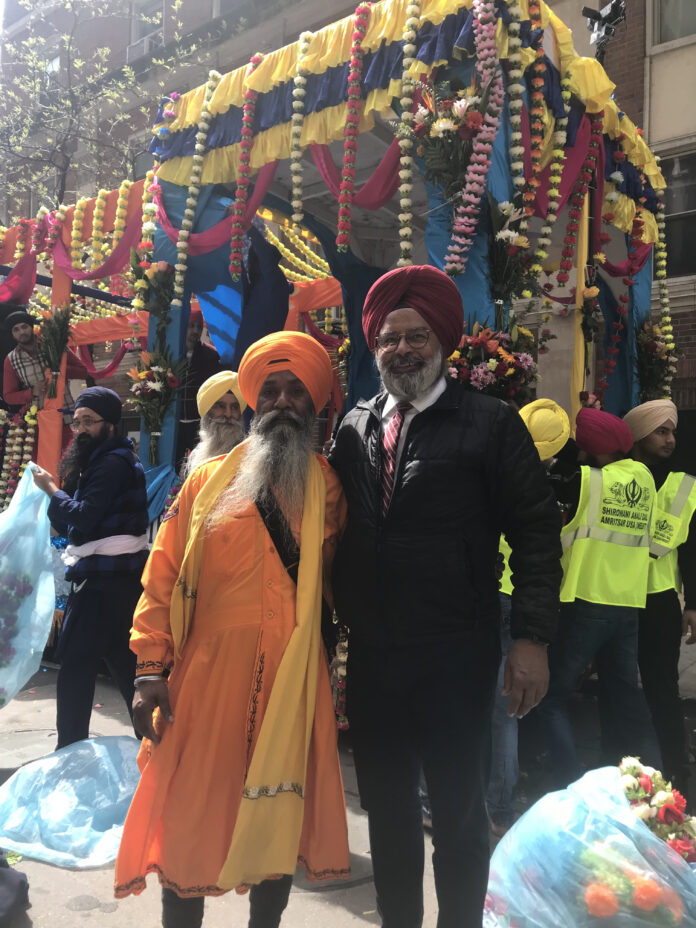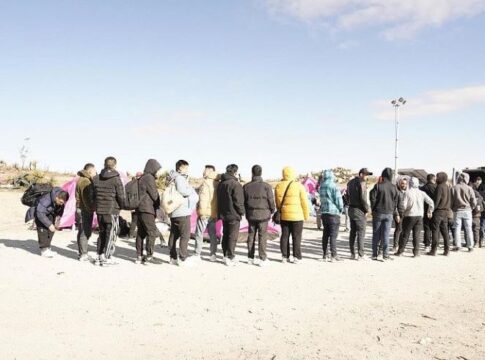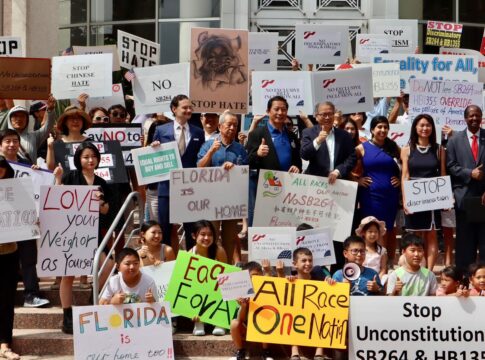Sikh Day Celebration in Richmond Hills. Photo couresy Harpreet Singh Toor
By Shruti Rajkumar, AsAmNews Intern
On January 16, 1983, Harpreet Singh Toor moved to the United States. As an immigrant from Punjab, he struggled to find a job in Cleveland. Later, he decided to move to Richmond Hill, New York, where he currently lives as a community activist.
“I came to New York, where it doesn’t matter what shape or color you come in. New York will take you in,” said Toor.
LATEST STORIES
Richmond Hill is a multiethnic neighborhood with a predominantly South Asian population. In the 1980s, Richmond Hill was densely populated with Italians and African Americans. The president and CEO of Omni Mortgage Corporation Herman Singh recalls how there were only about 15 or 20 Indian families in Richmond Hill when he moved there.
Then in the 1990s, more people began moving near Richmond Hill’s first Gurdwara, The Sikh Cultural Society Inc., and the Baba Makhan Shah Lubana Sikh Center, said Singh.
“People always want to live close by the temple. The demographic of the neighborhood started changing [as] more Indians [and] more Punjabi people started coming to live in Richmond Hill. it became like a…feeling that you’re living with your own people,” said Singh.
Over the past few decades, the Indian community has grown in Richmond Hill. Queens Community Board 9 member Mohinder Singh said that this has given the neighborhood a familiar atmosphere.
“Now, when you go out, everywhere you see Punjabis, and people are in high spirits. And there are two Gurdwaras, just three or four blocks from each other. But there are a sufficient number of people, more than 1000 every day. It’s a very vibrant and progressive community,” said Singh.
Among the contributions that the Indian community has made in Richmond Hill is an area within it that is commonly known as “Little Punjab” because of its abundance of Punjabi stores and restaurants.
“If you come here, you feel like you’re right, in Punjab, and you see a replica of Punjab, culture wise. You see the same thing which you see in India,” Herman Singh said.
Toor said Little Punjab is a place where people can feel at home. He also sees Richmond Hill as a place where multiple communities and people of different religious and cultural backgrounds can live together.

“You have Indian restaurants, but you see non-Indians coming in and picking up the food. You have Italian restaurants and you see more non-Italian people picking up the Italian food. This is something which I think is unique to New York. There are very few places like that, where you will have that kind of experience. This is something that makes me feel amazed about how the whole world is evolving. In a way, New York is setting an example in that evolution,” Toor said.
In October 2020, the communities’ contributions to the neighborhood were honored by the co-naming of Punjab Avenue and Gurdwara Street.
“It was a proud moment, because having your own Punjab Avenue and naming the street to your background, your culture in America—it’s better than you can ask for,” Herman Singh said.
Toor said he sees this achievement as the first step on a ladder to higher places for the next generation.
“You need inspiration, the kids need inspiration, the kids need some models. When they see these things, when they grow up, they will look at it and they will be like ‘Damn, if they can do this, why can’t we do this?’ So for me, it is like a stepping stone to move to the next level.”
Throughout the COVID-19 pandemic, the Gurdwaras in Richmond Hill have engaged in food distribution with community members. Every Friday, around 200 boxes of vegetables were delivered to the Sikh Cultural Society by a nonprofit organization, which locals would come in to take for themselves and to deliver to others, said Toor.
“COVID has actually shown both the good side and bad side. It showed that even though the people who are poor financially, by heart they are more rich than people can think of. it also makes you realize how important it is to serve the communities,” Toor said.
Gurdwaras serve meals every day to community members and visitors. Herman Singh said that if somebody doesn’t have a place to stay, they can go to the priest of a Gurdwara, where they will be fed and given a place to stay.
“That’s part of the culture, so people don’t feel left alone. All the people that come from India, they come straight to the Gurdwara, [and in] the Gurdwara they [can] always talk to somebody to find them a job, find a place to live. We have done a lot in the community. The community is growing, and the community really is very strong in this neighborhood,” Singh said.
AsAmNews has Asian America in its heart. We’re an all-volunteer effort of dedicated staff and interns. Check out our new Instagram account. Go to our Twitter feed and Facebook page for more content. Please consider interning, joining our staff, or making a financial contribution to support us.









